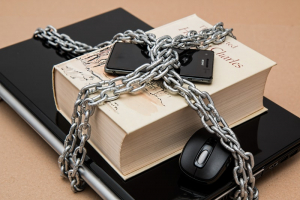Top 10 Most Asked Multitasking Interview Questions with Answers
You'll be able to ace your next interview and wow your prospective employer by answering the interview questions about multitasking. These are some often ... read more...requested interview questions concerning your multitasking abilities from HR managers, along with sample responses to prove you are the best applicant.
-
A successful response must detail how doing less can increase effectiveness. When a system becomes overloaded with information, it slows down or sometimes stops working altogether. Both individuals and technological devices like computers and phones are susceptible to this. Monitoring your or your machine's information intake is crucial because it can make it easier for you to remember critical information.
You can decide not to absorb knowledge at other times, even if some sort of information—like emails from your team leader or reminders from your doctor—won't fall under this category. For instance, time spent reading articles, checking news sources, or using social media.
There may be times when you can limit the kinds of information you let yourself take in or your overall information consumption. Establishing an information limit entails being deliberate about the knowledge you take in and appreciating the motivations behind your choices. Consider keeping a log of the specifics of the material you take in each week, as well as how it makes you feel. This enables you to comprehend the causes of any feelings of information overload.
Example Answer:
Strong information filters are necessary to manage a big workload and do more in less time. In my previous position, I discovered that I could concentrate on the primary task and complete it more quickly by carefully controlling the information I receive and the information that is assigned to or redirected to other team members.
I achieved this by employing email filters, and whether receiving phone calls or in-person interactions, I adhered to a strategy of cutting out the extraneous, delegating according to others' abilities, prioritizing according to business goals, and putting off less crucial activities.
Image by Alex Green via pexels.com 
Image by George Milton via pexels.com -
The fact that the human brain cannot genuinely multitask, and that multitasking is a combination of several soft and hard talents must be addressed in the majority of professional fields. You can use your multitasking abilities both at home and at business. Business experts sometimes handle several projects at once. As a result, they may spend their days crafting pitches or proposals for new projects, keeping track of the advancement of ongoing initiatives, or wrapping up documentation for a project that is already finished.
While juggling several tasks and priorities is usual in many occupations, project managers frequently oversee several projects at once. Being in charge of several projects at various levels of completion necessitates an organized strategy to prevent delays and guarantee projects continue on course.Typical instances of multitasking include:
- Organizing your home while taking in a podcast
- Taking calls from coworkers while reading emails
- Putting together furniture while studying the directions
- Yaking notes while attending a presentation or lecture
- Preparing dinner and assisting kids with their assignments
- Working on a project and communicating with your colleagues about it
- Talking on the phone and introducing someone
- Working out while watching television and buying online while dining
- Creating a report while doing web research and fact-checking
- Serving customers' food while answering inquiries from other clients
Example Answer:
By skillfully combining two projects, multitasking allows you to do them more quickly than if you worked on them independently. It can also be a means of enhancing the enjoyment of boring chores. For instance, watching television or listening to a podcast while working out can serve to divert your attention and shorten the duration of your workout.
The brain can only focus on one task at a time, hence I don't believe that true multitasking is feasible. Based on the various demands at work, I define multitasking as the ability to execute tasks successfully and efficiently when switching between many tasks frequently.

Image by Sora Shimazaki via pexels.com 
Image by Sora Shimazaki via pexels.com -
This question is an attempt by the interviewer to learn more about your prior multitasking experience. Most jobs require it, but if you can't recall an instance when you used it at a previous job, think about your personal life as well. As much as you can, describe your experience and the lessons you took away from it.
The purpose of this question is to help to hire managers picture you in this position by going over your experiences. While every position is different, employers choose workers who can remain calm under pressure and handle many tasks in high-stress environments. The easiest way to react is to give specific instances where you have demonstrated your multitasking abilities. Speak about times in your professional life when you had to wear many hats and handle many duties. Take them on a tour of your procedures. Then, finish strong by emphasizing how those situations helped you develop and what good resulted from them.
Example Answer:
I was in charge of a group project in school. I was in charge of both team management and a single assignment, and we had less than 24 hours to finish it. Team members came to me for help as issues emerged throughout the day. I found a fresh solution because it distracted me from my main objective. I instructed my team members to text me specifics about their problems. I took a break from my main activity after working on it for a reasonable amount of time to address some incoming difficulties from others.
Image by Kindel Media via pexels.com 
Image by Alex Green via pexels.com -
What is your biggest shortcoming when it comes to multitasking, as this question actually asks? Provide your improvement strategy and how you intend to address this weakness.
Juggling several projects at once while switching your attention between them is known as multitasking. By handling two or more things at once, effective multitasking enables people to finish their tasks more quickly. Yet, focusing on multiple things at once might make workers lose focus on complex jobs, which might be harmful to the quality of work produced. To maximize productivity at work, it's crucial to strike a balance between multitasking when it's possible and concentrating on difficult tasks when it's necessary.
When you start concentrating on several things that need to be finished within a certain amount of time, your mental productivity tends to decline. Moreover, it eventually reduces efficiency. Previous psychological research has shown that moving between numerous tasks causes your mind to slow down, eventually causing mental friction. Many studies have been done on the effects of multitasking on the brain. The weakening of working memory and long-term memory is among the most obvious issues that may develop with time, along with other issues.
Example Answer:
In my current position, I believe delegation is the hardest soft talent to master. It is challenging to forecast my workload because I occasionally have to handle customer calls. I occasionally don't have as much time as I need because of the overwhelming volume of phone calls.
Image by Edmond Dantès via pexels.com 
Image by Alex Green via pexels.com -
Make sure to include at least two practical abilities, such as setting priorities, being consistent, delegating, etc. To manage your time effectively, prioritization means having the capacity to evaluate your obligations and group work according to their significance. Setting priorities may entail finishing the simplest chores first and devoting the remainder of your time to larger, more challenging projects. It might also entail starting with the chores that require the least amount of time and working toward less significant jobs last. The capacity to make the most of your time by establishing order is a fundamental skill for effective multitasking, regardless of how you decide to prioritize.
When you delegate work to others, you're trying to finish it on time. When you delegate, you often offer team members smaller tasks, so you can concentrate on the ones that are more important. Knowing when your workload is sufficient and upholding boundaries help you manage your time when multitasking. You can concentrate on the jobs that best suit your skills by choosing the important duties and delegating the less important ones, which will enable you to complete more in less time.
Planning your time helps you meet deadlines and accomplish your objectives. It is the capacity to take challenging circumstances and deconstruct them into realistic actions and due dates. You can choose where you can multitask to stay on schedule by arranging your daily activities and leaving room for unforeseen duties. This ability also aids in determining which tasks demand your undivided attention and which take up the least amount of time.Example Answer:
Strong prioritization and time estimating abilities are a fantastic place to start when multitasking. I create a list of deliverables for the following week at the conclusion of each week and a to-do list for the following day at the end of each day. My lists are ranked in order of importance to the business's goals and according to time estimates. My to-do list only contains the chores I can finish in a given day, but I also have a space for "wish list" items in case I have additional time.

Image by Ketut Subiyanto via pexels.com 
Image by cottonbro studio via pexels.com -
It can be helpful to evaluate the importance of each task when you have a list of urgent chores and need to choose which to prioritize. Give priority to the customer project, for instance, if you have two pressing tasks: one is a project for your clients and the other is a report you must write internally for your company. Make an estimation of how much time each task will take to help you prioritize if there are still chores that appear to be equally important. If you start with the things that are equally important but take the least amount of time to do, you might feel more motivated and energized.
Understanding the full breadth of what has to be accomplished is essential for effective prioritization; even the most routine chores should be recorded and taken into account. Include both personal and workday chores in one task list in order to provide oneself with a complete picture. Everything should be recorded in one location, from picking up your dry cleaning to scheduling a one-on-one appointment with your supervisor. After everything has been put in writing, tasks are usually prioritized based on their relevance, urgency, length, and reward.
Example Answer:
The first thing I do is take some time to sit down and make a list of all the goals and objectives I need to accomplish. I then rank them in order of relevance and urgency. I determine what must be done right away and what can wait. Basically, I divide everything into four quadrants using the Covey Time Management Matrix. This enables me to begin working on the most crucial issues. I also divide each objective into more manageable chores. This makes it easier for me to recognize what needs to be done to reach my goals and reduces my sense of overwhelm.

Image by Tima Miroshnichenko via pexels.com 
Image by Alex Green via pexels.com -
Those with a fundamental understanding of the concept should fill positions that include multitasking as part of their duties. Provide the best definition you can of the phrase, and think about citing a time in the past when you employed multitasking as an example. If you can't recall an instance when you effectively multi-tasked, use a hypothetical example that relates to the position you're interviewing for now.
The purpose of behavioral interview questions is to better understand your experience in various settings. The best way to properly highlight your earlier experience is to use the STAR method. The situation, Task, Action, and Result are abbreviated as "STAR," and your response would follow this format, describing the scenario, the task, the activity you performed, and then the outcome you were able to achieve.
Example Answer:I can recall a moment when I had to balance several tasks at once. I had a project that needed all of my focus, but I also had to answer calls and emails right away. I came early every day so I could begin the project without interruption. I made sure to work on answering emails while I was receiving phone calls and saved the easy parts of the job for when I anticipated getting emails and calls. I was able to finish the assignment and my everyday responsibilities by doing this.

Image by Alex Green via pexels.com 
Image by Sora Shimazaki via pexels.com -
Demonstrate that even if you can maintain a high output level continuously, some tasks necessitate a lesser output to maintain quality. Make a daily to-do list in order to develop an action plan. Making a detailed list of your daily responsibilities will help you stay focused. Spend 10 to 15 minutes each morning jotting down a list of tasks on a notepad. Divide up huge jobs into manageable pieces. If you're working on a lengthy project or assignment, you might start by making a more thorough list of the necessary tasks. You can then add these duties to your daily to-do list.
Keep track of your daily activities to make sure you're staying on plan. If you're running behind time, you can decide to stick to one task entirely rather than attempting to switch between them. This can enable you to quickly complete pressing activities and resume juggling several obligations. To assist you in maintaining focus on your work, think about adopting a task management tool.
Example Answer:
Generally speaking, sure, but it also depends on the tasks. Little jobs that don't require as much concentration and focus can be completed more quickly when you multitask. This level of productivity can't always be kept up when working on more complex, detail-oriented jobs that call for intense concentration. The key is striking a balance between efficacy and quality while maintaining speed and efficiency.

Image by Antoni Shkraba via pexels.com 
Image by Alex Green via pexels.com -
The majority of professionals multitask, or carry out several tasks at once, while at work. In many fields, being able to multitask is a valuable talent because it improves production and saves time. You can have a fulfilling job or be promoted by learning how to develop this skill. Prioritization, organization, and stress management should be on your list because they apply to all multitasking roles. Professionals might use their multitasking abilities in the following ways in their day-to-day work:
- Managing multiple client issues at one time
- Supporting several departmental projects
- Writing blog posts for the company's blog that debut on different days
- Planning travel arrangements for several industry conferences
- Helping multiple colleagues with technical issues
Example Answer:
Effective multitaskers have a few important attributes in common, such as the capacity to prioritize tasks, maintain organization, and remain composed under pressure. To manage numerous things at once, multitaskers need to be extremely organized, and they also need a system in place to help them keep track of all they need to complete. They must also be able to identify what jobs are most crucial and pressing, and prioritize them such that they receive top priority.

Image by Karolina Grabowska via pexels.com 
Image by Karolina Grabowska via pexels.com -
When making decisions or setting priorities, it is wise to use established techniques. Rearrange your list of tasks to be finished from the highest priority to the lowest once you've created it. Put your jobs into the following categories to determine which are high priorities and which are low priorities:
Urgent and important: These are high-priority tasks that you might complete first. These tasks might include answering customer questions, completing projects with tight deadlines, and running an urgent errand for your manager.
Not urgent and important: You can usually do these tasks at any time during the day, but they add value when you complete them. Many of these tasks involve planning, such as networking with other companies to increase business outreach.
Urgent and not important: This category is for tasks of low importance that you might complete in order to get to more important tasks, like booking a flight, so you can attend a marketing conference. You may be able to delegate these tasks to a team member if you oversee projects or people.
Example Answer:
I like to prioritize based on importance and urgency utilizing the Eisenhower Decision Matrix. This is helpful for project planning. I utilize priority lists, which rank tasks according to their immediate relevance, for minor tasks and project sub-steps. I aim to use both of these strategies along with time blocking to ensure that, if possible, I can concentrate completely on one work in order to enhance my efficiency in finishing each one.

Image by SHVETS production via pexels.com 
Image by Alex Green via pexels.com































